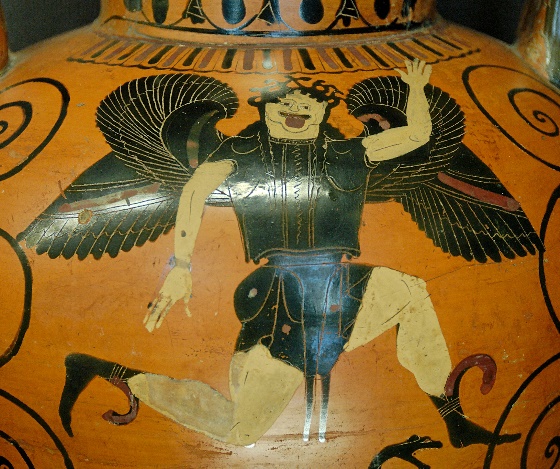Gorgon
Obscured, deformed by some dire Gorgon spell,
— Book 2 Canto 7
In Homer (Iliad, V, 741), Athena puts on her shoulders the Aegis on which is painted the head of the Gorgon, the dreadful monster.
Hesiod mentions in Theogony (line 270) three Gorgons of which only one is deadly, Medusa, who will be later killed by Perseus.
Apollodorus adds that all who looked at them were turned to stone.
The Gorgon Medusa symbolises the fear that paralyses those who identify with her by contemplating her.
Being the daughter of Phorcys and Ceto, she appears at the very dawn of life, at the formation of the first brain in animal life, which centralised sensations and allowed the formation of a rudimentary memory.
Gorgon. Louvre Museum. Public domain
And it was the hero Bellerophon who mounted the winged horse Pegasus to kill the Chimera.
This story indicates that in order to get rid of unconsciousness and illusion – the Chimera – one must eliminate fear in order to be able to use the force that is then released represented by Chrysaor, the man with the “golden sword”, the symbol of implacable right action.
In this passage from Savitri, life is said to be distorted by some spell similar to fear generated by the paralysing glance of Gorgon Medusa.
